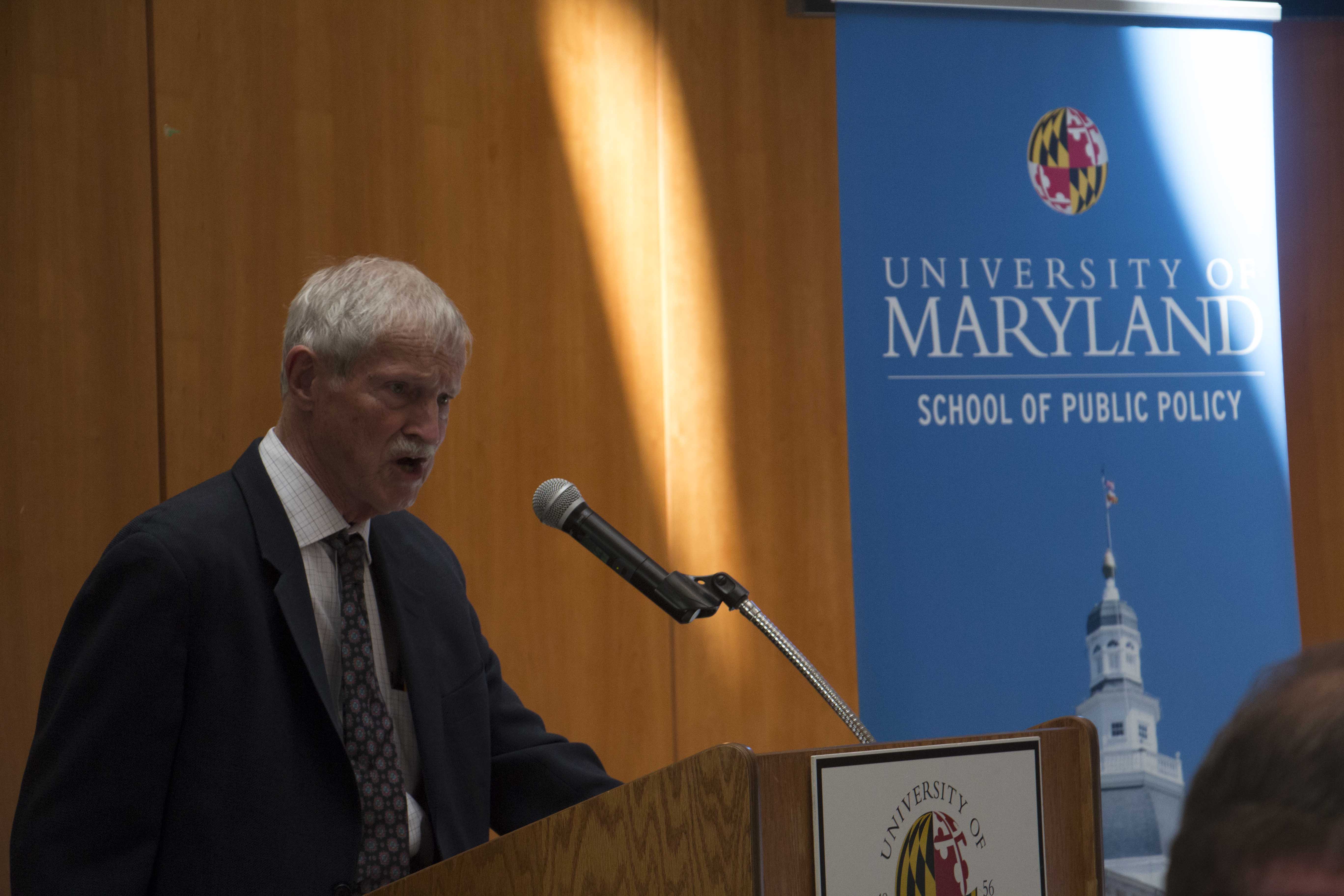A group of 12 abolitionists gathered in a print shop in London in 1787 to plot how they would combat the slave trade in the United Kingdom. Ultimately, the men decided to focus on abolishing the trafficking of slaves rather than the abolition of slavery itself.
“It was a very rational decision, and yet from the beginning of this struggle we have had a tension between, ‘Are we eradicating slavery or eradicating the trade in slaves?'” said Luis CdeBaca, the former ambassador-at-large of the state department’s Trafficking In Persons Office, at the University of Maryland on Thursday.
CdeBaca’s keynote, in front of about 40 attendees in the atrium of Van Munching Hall, kicked off the Stern Symposium — an annual event hosted by this university’s public policy school, which addresses neglected issues in public policy. In previous years, it’s covered issues like racial inequality and international LGBTQ policy.
This year’s symposium tackled the issue of labor trafficking, including its origins and prevalence on a local and global scale. The topic was submitted by Graduate Women in Public Policy, a student organization that promotes women’s leadership in the field.
[Read more: A federal grant will fund five Prince George’s County human trafficking investigators]
“We’ve learned that there’s really not much information about labor trafficking out there,” said Tawni Alston, a public policy graduate student and member of GWiPP. “There’s a lack of research, lack of awareness and usually when people speak about human trafficking they think of sex trafficking exclusively. We really thought this would be a great opportunity to foster that discussion.”
Labor trafficking is a form of slavery in which traffickers force people to work in often inhumane conditions by threats, deceit and sometimes violence, according to the Polaris Project, a nonprofit that combats human trafficking.
Despite several civil rights achievements that have helped protect vulnerable workers — such as enacting the 13th Amendment and eliminating debt bondage — trafficking persists because traffickers adapt, CdeBaca said.
“Every year, those tomatoes need to get picked,” CdeBaca said.
[Read more: Maryland has seen 66 human trafficking cases in 2016. This center aims to help victims.]
He called this the “constant” of labor trafficking that has persisted despite legal efforts to protect vulnerable workers across the world.
“Sometimes it was force and overt threats,” CdeBaca said of strategies traffickers use to entrap their victims. “A lot of times, it was psychological coercion — threats of deportation, taking people’s passports.”
In 2002, CdeBaca prosecuted United States v. Lee, the largest labor trafficking case ever brought by the U.S. Justice Department. More than 200 workers, mostly young women, were held against their will for nearly two years in a garment factory in American Samoa. Kil Soo Lee, the owner of the factory, would be found guilty on 14 counts of money laundering, extortion and other crimes and sentenced to 40 years in prison.
Labor trafficking is prevalent on a local level as well, said Christine White, a criminology and criminal justice lecturer. The Washington, D.C., metro area is a prime spot for labor trafficking because it’s densely populated with access to international airports, major highways and wealth inequality, which can lead to the abuse of vulnerable populations, she said.
When asked what can be done to combat labor trafficking, White said consumers could raise awareness about the issue by asking questions about where their food and clothing comes from.
“How did that crab land on your plate?” White said. “There are all sorts of possibilities that you may not think about.”
Sophomore cell biology and genetics major Mia Lang was struck by the idea that many of the things she owned or purchased may have been made by people in labor trafficking.
“It’s important to think about every day what you’re using and what you’re buying and how every single thing could contribute to trafficking,” she said. “I can’t believe this is happening in our country.”



